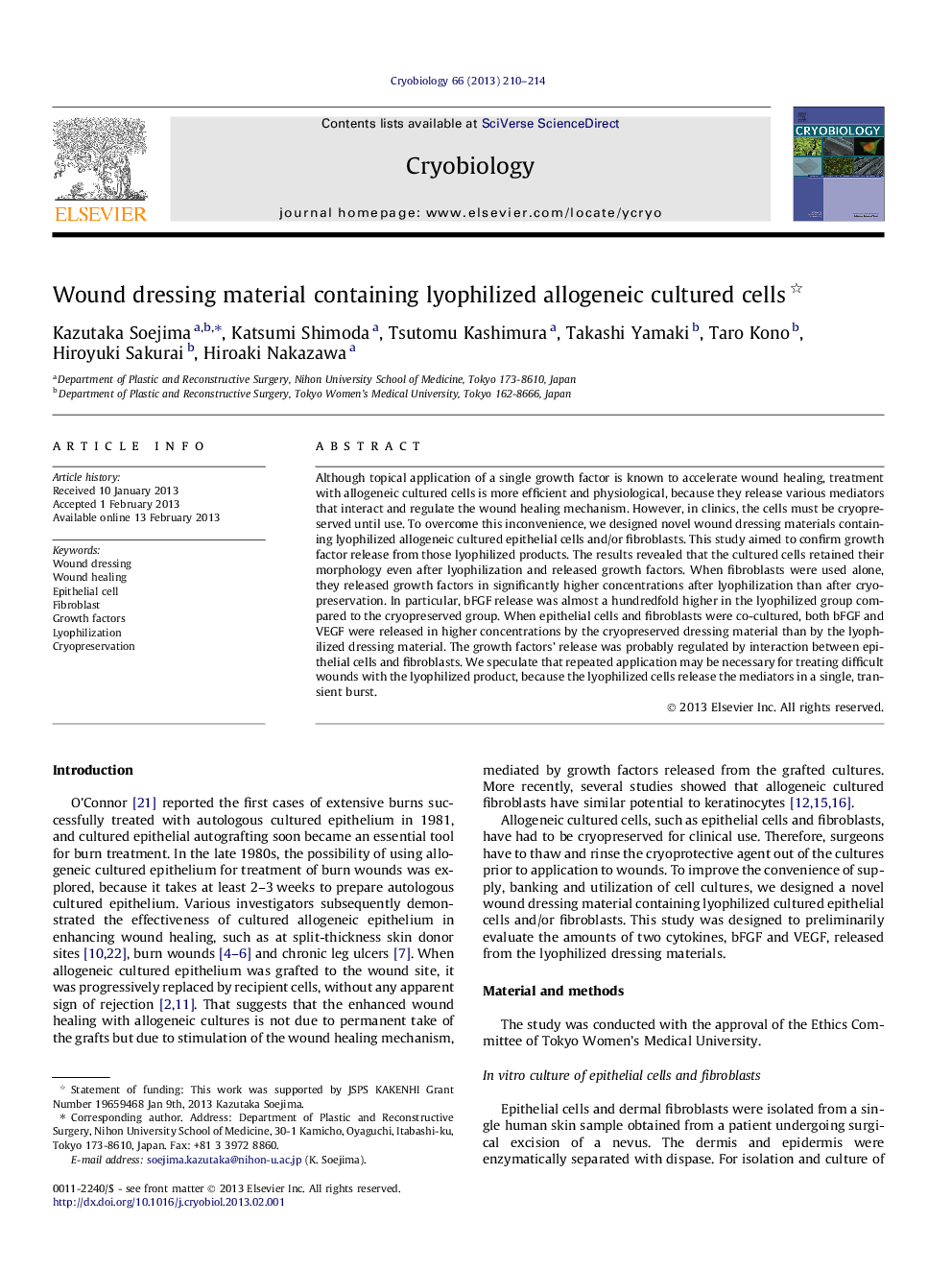| Article ID | Journal | Published Year | Pages | File Type |
|---|---|---|---|---|
| 10928093 | Cryobiology | 2013 | 5 Pages |
Abstract
Although topical application of a single growth factor is known to accelerate wound healing, treatment with allogeneic cultured cells is more efficient and physiological, because they release various mediators that interact and regulate the wound healing mechanism. However, in clinics, the cells must be cryopreserved until use. To overcome this inconvenience, we designed novel wound dressing materials containing lyophilized allogeneic cultured epithelial cells and/or fibroblasts. This study aimed to confirm growth factor release from those lyophilized products. The results revealed that the cultured cells retained their morphology even after lyophilization and released growth factors. When fibroblasts were used alone, they released growth factors in significantly higher concentrations after lyophilization than after cryopreservation. In particular, bFGF release was almost a hundredfold higher in the lyophilized group compared to the cryopreserved group. When epithelial cells and fibroblasts were co-cultured, both bFGF and VEGF were released in higher concentrations by the cryopreserved dressing material than by the lyophilized dressing material. The growth factors' release was probably regulated by interaction between epithelial cells and fibroblasts. We speculate that repeated application may be necessary for treating difficult wounds with the lyophilized product, because the lyophilized cells release the mediators in a single, transient burst.
Keywords
Related Topics
Life Sciences
Agricultural and Biological Sciences
Agricultural and Biological Sciences (General)
Authors
Kazutaka Soejima, Katsumi Shimoda, Tsutomu Kashimura, Takashi Yamaki, Taro Kono, Hiroyuki Sakurai, Hiroaki Nakazawa,
